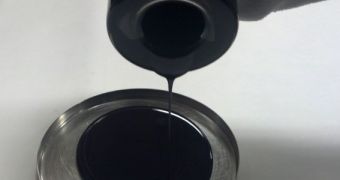Researchers at the North Dakota State University (NDSU) are currently investigating ways of putting old, discarded tires to good use. They say that particles extracted from tires can be used as asphalt enhancers, inside rubberized road materials. Many states have already begun using such materials to enhance their aging road infrastructure.
Official statistics from the US Environmental Protection Agency (EPA) reveal that Americans discard around 300 million tires every year. Most of these tires end up in landfills. Those that do not are dumped illegally on private or public lands and end up as breeding grounds for rodents and disease-carrying mosquitoes. In some instances, abandoned tires increase fire hazards in many areas.
Over the past few years, scientists around the country have been working on finding sustainable and beneficial ways of using all this synthetic rubber. The goal is to find environmentally-friendly uses for a material that is by its nature very harmful for the environment. The NDSU team plans to do this by grounding up the tires and producing particles that can be incorporated in asphalt-enhancing materials.
The effort is led by associate professor of civil and environmental engineering Magdy Abdelrahman and funded by the US National Science Foundation (NSF) over a period of five years. The team is currently in a stage where it keeps experimenting with rubber particles of various sizes, in order to find the most suitable diameter for the applications the researchers have in mind.
“It's very durable. We mix it with different materials and in different percentages, and in different conditions, to find the best ways to add rubber to asphalt,” Abdelrahman says. EPA data reveals that the asphalt rubber industry consumes around 12 million tires annually, with the highest amounts being used up for highway construction and maintenance in Arizona, California, and Florida.
States such as New Mexico, Texas, Nebraska, New York, and South Carolina have also started using asphalt rubber or are studying the feasibility of using it in the future. In addition to providing a sink for synthetic rubber, asphalt rubber allows road surfaces to withstand heavy traffic for longer periods of time. It also contributes to reducing road maintenance costs, as well as road-related noises.
“This project will have a broad impact because solid waste is problematic throughout the world. Asphalt applications have the potential to contribute to the solution of the growing solid waste problem provided that engineering and environmental concerns are addressed. Asphalt binders represent an area that can improve pavement performance,” Abelrahman concludes.

 14 DAY TRIAL //
14 DAY TRIAL //